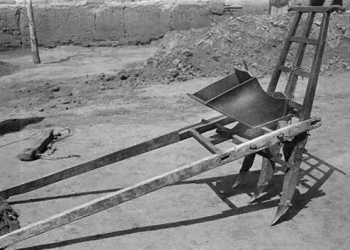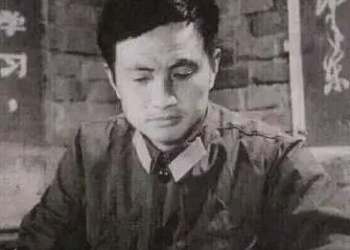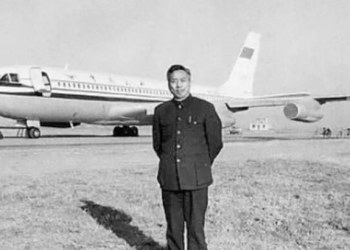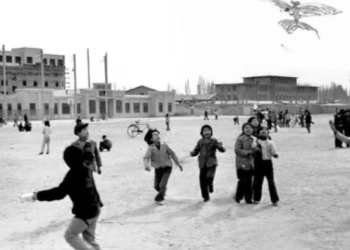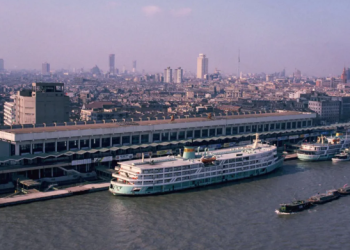When we talk about China in the 1980s, vivid scenes full of energy and vitality come to mind. During this unique period in history, China was undergoing rapid change and development. Tianjin, an ancient yet modern city, stood out with its distinctive local charm and rich cultural atmosphere, becoming a captivating sight in the eyes of many foreigners.
Through the lens of an American couple, we are able to travel back in time to that fascinating decade. On the third leg of their journey, they arrived in Tianjin—a coastal city in eastern China—renowned for its deep historical roots and unique architectural styles. The city attracted countless domestic and international visitors with its cultural richness and visual appeal.
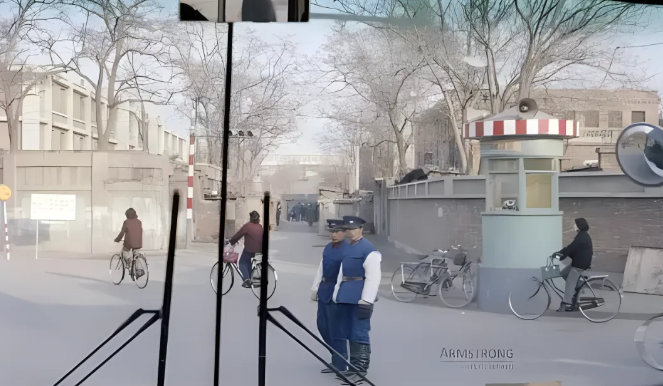 Riding on a public bus through the streets of Tianjin, the cityscape slowly unfolds outside the window. At the intersections where roads crisscross, the figures of traffic police stand out prominently. Dressed in neatly pressed uniforms, their attire carries a sense of solemn dignity. The shoulder and collar insignia shimmer with a metallic sheen under the sunlight. These everyday guardians quietly embody duty and commitment through their actions, becoming an indispensable part of the city’s fabric
Riding on a public bus through the streets of Tianjin, the cityscape slowly unfolds outside the window. At the intersections where roads crisscross, the figures of traffic police stand out prominently. Dressed in neatly pressed uniforms, their attire carries a sense of solemn dignity. The shoulder and collar insignia shimmer with a metallic sheen under the sunlight. These everyday guardians quietly embody duty and commitment through their actions, becoming an indispensable part of the city’s fabric
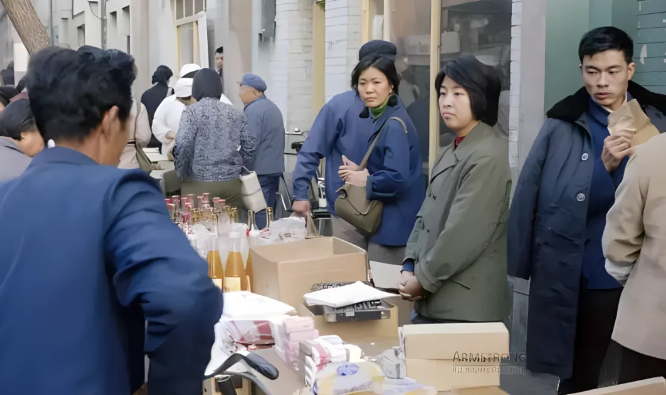 Stepping into the bustling markets of Tianjin, one is immediately surrounded by a sea of people. Stalls overflow with silk fabrics, antiques, and vintage treasures, all gleaming under the sunlight. Vendors enthusiastically call out to passersby, while a sugar painting artist crafts delicate figures as he loudly promotes his work. Steam rises from pancake stalls, where sellers eagerly greet those coming and going. The air is filled with animated bargaining between customers and vendors, creating a lively and vibrant atmosphere.
Stepping into the bustling markets of Tianjin, one is immediately surrounded by a sea of people. Stalls overflow with silk fabrics, antiques, and vintage treasures, all gleaming under the sunlight. Vendors enthusiastically call out to passersby, while a sugar painting artist crafts delicate figures as he loudly promotes his work. Steam rises from pancake stalls, where sellers eagerly greet those coming and going. The air is filled with animated bargaining between customers and vendors, creating a lively and vibrant atmosphere.
This vibrant scene is steeped in traditional commerce and rich folk culture. The crispy crunch of Tianjin mahua and the sweet aroma of local tea soup fill the air, delighting the senses. People dressed in a colorful array of clothing weave through the crowds, painting a vivid and dynamic portrait of everyday life in the city.
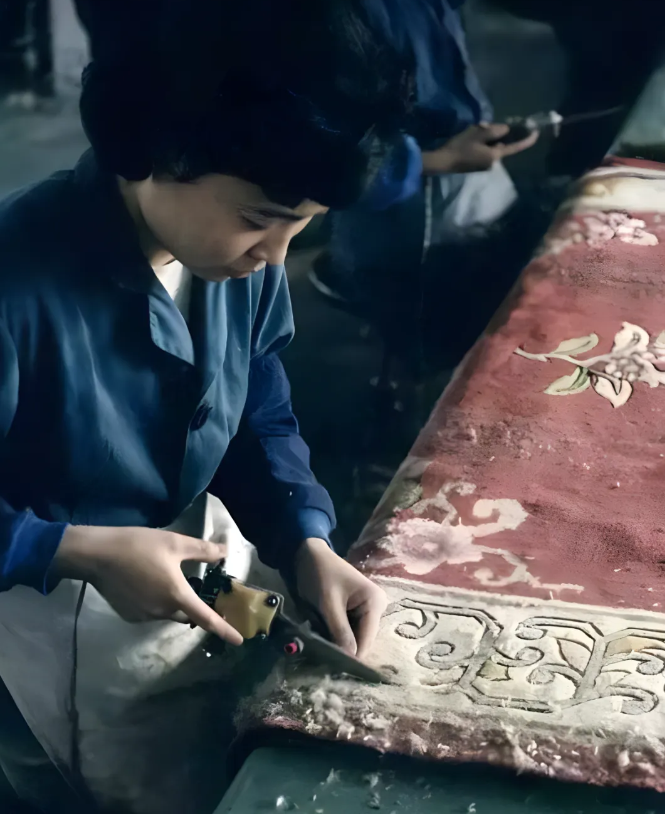
Beyond the bustling street markets, Tianjin is also home to a wealth of traditional handicraft workshops and artisan stores that reflect the city’s deep cultural roots. Among these, the carpet factories stand out as one of Tianjin’s most iconic features. Stepping inside one of these factories, visitors are greeted with the rhythmic sound of precision and dedication. Workers, with laser focus and masterful skill, carefully trim and refine each carpet by hand. Every cut is clean and deliberate, demonstrating years of honed expertise passed down through generations.
These handmade carpets are not only known for their vivid colors and intricate patterns but also for their superior quality and durability. Crafted using age-old techniques combined with a refined artistic vision, each carpet tells a story—woven into its fibers are symbols of prosperity, harmony, and tradition. This blend of functionality and aesthetic appeal has made Tianjin carpets highly sought after by both domestic consumers and international tourists alike.
The carpet industry in Tianjin is more than a trade; it is a cultural emblem. It represents the spirit of craftsmanship that defines the city—where modern industry coexists with the preservation of time-honored skills. For many artisans, working in these factories is not just a job but a calling, a way to keep heritage alive through every thread they weave. As global interest in sustainable and handmade goods grows, Tianjin’s carpets continue to find their way into homes and museums around the world, acting as cultural ambassadors of a city that gracefully blends the past with the present.

In addition to exploring traditional markets and factories, the American couple also stepped into a cloisonné enamel workshop—an artisan space dedicated to one of China’s most intricate and revered traditional crafts. Cloisonné, known in Chinese as Jingtailan, is a brilliant fusion of metalwork and enamel artistry, renowned not only for its vivid beauty but also for its profound cultural significance.
The process of creating cloisonné is both complex and time-consuming. From the initial design sketch to wire inlaying (qià sī), enamel filling (diǎn lán), firing (shāo lán), polishing, and finally gilding, each step is a test of a craftsman’s precision, patience, and lifelong skill. Inside the workshop, artisans were seen bending ultra-fine copper wires—no thicker than a strand of hair—into elegant and sophisticated designs. These delicate patterns are then carefully affixed onto a copper or bronze form, which serves as the base structure.
Next comes the filling of vibrantly colored enamel pastes into the intricate wire cells. After several rounds of high-temperature firing in a kiln, the enamel sets with a soft, luminous sheen. The final product is then meticulously polished to reveal a glossy finish, and finally, gilded with gold to enhance its richness. Each cloisonné piece—whether a vase, bowl, or decorative plaque—is a unique creation, characterized by smooth lines, refined forms, and an unmistakable radiance that reflects both artistry and tradition.
Cloisonné is more than just ornamentation; it is a cultural time capsule. Its roots trace back to the Ming Dynasty, and through centuries of refinement, it has become a treasured symbol of Chinese craftsmanship. To witness its creation in a workshop setting is to understand the devotion required to preserve such an elaborate form of artistic expression.
In 1980s China, every era left behind its own unique signature—etched into the memory of cities like Tianjin. Known for its vivid street life and deep cultural atmosphere, Tianjin stood as a living microcosm of China’s social transformation during this pivotal decade. From the craftsmanship in local workshops to the daily hustle of market life, the spirit of resilience, creativity, and quiet pride was everywhere.
Many ordinary yet extraordinary individuals contributed to Tianjin’s story during this period. Through their labor, skill, and determination, they helped forge a legacy that still resonates today. Cloisonné, like so many other traditional arts, served as both a livelihood and a living testimony to the enduring value of Chinese heritage in a world that was rapidly changing. These cultural footprints, captured through foreign eyes in that era, remain timeless.

They may have been the diligent factory workers, quietly dedicating themselves to their labor, using their hands to build a better life. They may have been the committed artists, brushing ink across paper in studios, capturing the tides of the times through each stroke of their paintbrush. Or they may have been the steadfast police officers, standing watch in every corner of the city, safeguarding the peace and well-being of its citizens.
These unsung heroes embodied responsibility and commitment, courage and resilience, not through grand declarations, but through everyday actions. Their stories and their spirit have become a priceless part of Tianjin’s legacy—an enduring inspiration that continues to encourage generation after generation to move forward and pursue their dreams.
Today, as we look back on the captivating 1980s, the street life and local charm of Tianjin, as well as the imprint left by these everyday heroes, remain vividly etched in our memories. These precious moments and stories live on, rooted in our hearts as a source of strength and inspiration for the journeys ahead.

